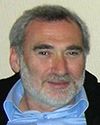Pitfalls and Challenges of Seismic Imaging
OR
About the Course
SEG members, view the course for free!
2015 SEG Honorary Lecturer Europe. While depth migration and the so-called "full-waveform inversion" play an increasing role in seismic exploration, none of them can be considered as an ultimate tool to infer the interior structure of the earth. Each of these methods has its own limitations and pitfalls. So, depth imaging requests knowledge on a highly accurate and detailed subsurface velocity model, which is a difficult problem by itself. Full-waveform inversion suffers usually from inadequate assumptions about wave propagation in the real media and computational over complexity. In such a situation, an alternative way to look at seismic imaging is needed.
In this lecture, I will not propose new and completely developed algorithms or numerical schemes for seismic imaging or inversion. The lecture has a conceptual character and is therefore not structured in sections dealing with theory and numerical examples; rather, the examples will continuously support the argument.
In the first part of my lecture, I will formulate a number of fundamental questions which should be addressed to make the field of geophysical inverse problems a mature science rather than a set of recipes. Proposed solutions are usually based on the criterion of the best fit between calculated and observed data. But it is well understood that by itself, a good fit does not guarantee that an inverted model is correct. Seismic inversion may lead to construction of several subsurface models with significantly different geological meaning, all of which fit the observed data equally well. The ill-posedness of seismic inverse problems is fundamental and does not depend on a particular type of algorithm or on the approach underlying the algorithms.
I will introduce and discuss a way to look at model-independent seismic imaging using the quantum mechanics concept. Today, many quantum physicists believe that quantum principles in fact apply on all scales. In Feynman's path-integral approach, a particle does not follow a single trajectory, but it follows every possible path in the space-time domain when each of the trajectories has its own amplitude and phase. Thus, each trajectory contributes a different phase to the total amplitude of the wave function. Can Feynman's path-integral idea be used for seismic imaging? In analogy to the path-integral method, we can construct the seismic image by summation over the contributions of elementary signals propagated along a representative sample of possible paths between the source and receiver points. The quantum imaging converges to a standard imaging procedure only in trivial situations of a deterministic and known velocity model. But what happens when the model is unknown, random, or estimated with uncertainties, or even worse — the model does not describe adequately the wave propagation process in the real earth? In my opinion, it happens more often than we think. In this case, a single stationary path does not adequately describe ray/wave propagation process and conventional imaging does not produce a correctly focused subsurface image. In contrary, quantum imaging uses all possible trajectories accounts for multiple stationary paths and takes into account model uncertainties.
Small-scale structural details and heterogeneities of the subsurface such as faults, karsts, and fractures are of crucial importance for exploration, production, and development of unconventional oil and gas reservoirs. Understanding the location and orientation of natural fractures is important for optimal well placement when sweet-spotting in an unconventional reservoir play. The information on fault and fracture systems usually is obtained from interpretation, seismic attribute, or anisotropy analysis using the effective media. At the same time, small-scale elements of the subsurface are capable of generating strong scattered/diffracted waves, which are recognized as main information-carrying signals. Although the importance of diffracted waves in seismic has long been recognized, it will not be a gross exaggeration to say that for a long time, diffractions remain "the abandoned stepchildren of traditional seismic processing and imaging." Over the last decade, there has been an increasing interest to use diffractions as a direct indicator of various reflector discontinuities, faults, karsts, fractures, etc. I will present several ways to separate the total wavefield into two components: specular reflections and diffraction. Images of the separated diffractive component of the total wavefield are able to emphasize small but important geologic objects that often are invisible after conventional seismic processing.
Your Instructor

Evgeny Landa obtained his MScin geophysics at Novosibirsk University (1972) and PhD in geophysics at Tel Aviv University (1986). He started his career in Novosibirsk, Russia (formerly the Soviet Union) as a researcher and senior geophysicist at the Siberian Geophysical Expedition. After immigrating to Israel, he worked at the Geophysical Institute of Israel as researcher, head of the R&D group, and head of the seismic department (1981–2002). Currently, he is the director of OPERA (Applied Geophysical Research Group) in Pau, France where he is involved in different aspects of seismic data processing, velocity model building, and time and depth imaging. His work on velocity model building by coherency inversion has had a strong impact on today's seismic depth-imaging workflows and forms an important part of the GeoDepth (Paradigm) software package. Today, Landa is a member of the advisory board of Geomage. Recently, his research interest involves using nonreflecting energy for increasing seismic resolution and imaging without precise velocity information. He has published more than 60 papers in international journals and the book Beyond Conventional Seismic Imaging. He is a member of EAGE and SEG, from which he received the awards of Best Paper (SEG, Honorable Mention, 2005) and the EAGE Eotvos Award (2007 and 2009).
